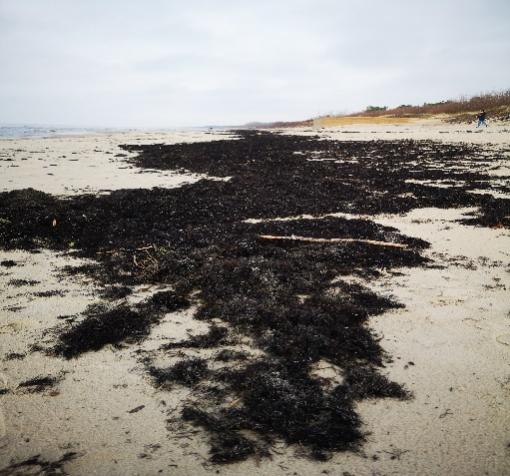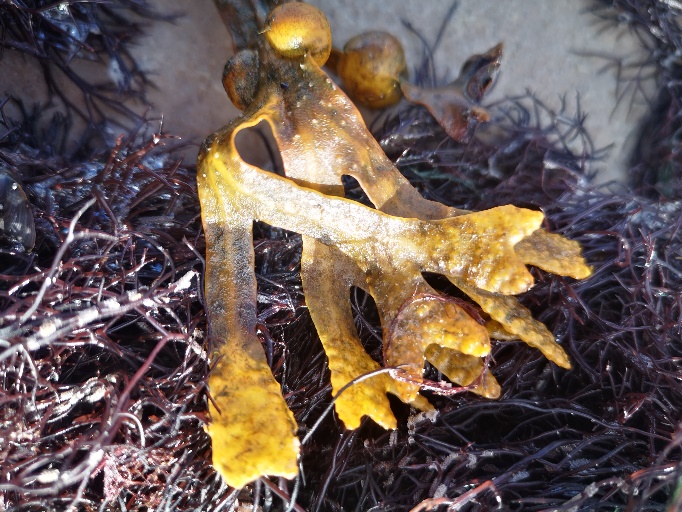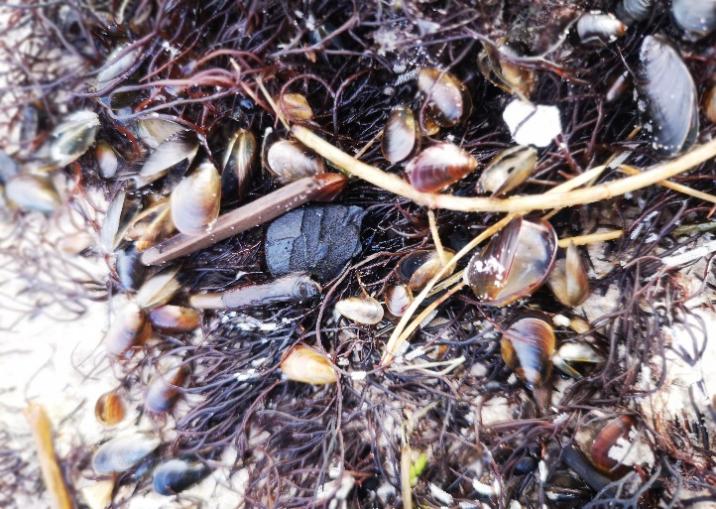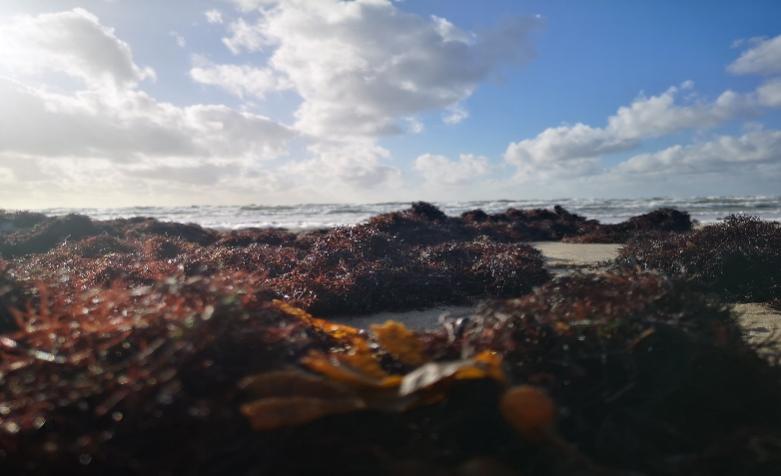 |
Could algae accumulated on the sea coast and contaminated with the products of human activity become a potential source of nutrients for the restoration of terrestrial ecosystems if using them according to the principle of a circular economy?
Every year after storms along the Baltic Sea coast we can see various accumulations of algae mixed with seaweed, shells and various human waste products which emitting an unpleasant smell. These accumulations are known as marine litter or as a beach wrack. Communal utility service companies are responsible for collecting this beach wrack from the seacoast and disposing of it as waste. Scientific research shows that the mixture of marine biomass and various wastes, known as beach wrack, not only emits an unpleasant odour but also contributes to climate change by releasing carbon dioxide, methane and other pollutants. Heavy metals and oil products can be released into the environment as well. In addition, algae biomass may contain hazardous substances, such as phthalates, which reach the coastal zone from plastics. Despite the negative aspects, these accumulations contain rich nutrients that can be used to enrich the soil for agricultural production or to strengthening dune slopes.
Synthetic mineral fertilisers are commonly used in agriculture to fertilise crops. However, these fertilisers cannot be fully assimilated by plants, resulting in unused nutrients such as nitrogen and phosphorus leaching into the soil which then pollutes surface and groundwater. In addition, the cost of producing these mineral fertilisers is relatively high. Therefore, in an effort to reduce dependence on mineral fertilisers, emphasis has been placed on the use of organic fertilisers such as animal or bird manure, plant residues, etc. However, the unbalanced use of these different types of organic matter can also lead to pollution. So, what are the future alternatives?
It is known that marine biomass (algae, shells) is a valuable source of nutrients that can be extracted and utilized in fertilizer production through the application of advanced technologies. Many studies were done seeking to use marine resources (especially microalgae) for biodiesel, biogas production or use it for bioenergy. Despite its potential, algal biomass has received little attention regarding its processing and utilization in agriculture to enhance soil fertility, thereby improving the nutritional environment for plants and increasing crop yield and quality. This presents an opportunity for the development of value-added products, such as various algal biofertilizers, which could contribute to more sustainable nutrient cycling in agricultural systems and reduce reliance on synthetic mineral fertilizers. Thus, seashore biomass could be properly processed and utilized as an alternative to mineral fertilizers to maintain soil fertility. By creating valuable compost rich in organic carbon and nutrients from this biomass and using it in combination with other materials, it is possible to form a complex for improving soil properties. Such a complex not only increases soil nutrient levels but also helps prevent nutrient leaching into the hydrosphere, particularly phosphorus. Additionally, it improves nutrient assimilation by agricultural plants during drought periods, consequently increasing agricultural yields.
 |
 |
 |
 |
Beach wrack accumulations on the Baltic Sea coastline. Photo: author of the article
How to implement this?
Klaipeda University researchers initiated an international project and together with their partners won EU financing under the 2021-2027 Interreg VI-A South Baltic cross-border cooperation programme for the implementation of the project “Eco-designing for the coastal zone nutrient's circularity – ECONUT”.
The goal of the project is to create biotechnologies and value-added products for sustainable agriculture, dune protection from wind erosions, storm floods and biodiversity loss. These biotechnologies will use marine biomass from the coastal zone of the Baltic Sea, treat it appropriately and ecologically direct the flow of nutrients to meet the needs of soil and water ecosystems, following the principles of the circular economy. An international consortium of 6 partners from Lithuania, Poland, Sweden, Germany and Denmark, supported by Finnish associate partners, will work together to achieve these goals.
The project plans to create two technologies of the nutrients’ flow’s circularity and sustainable usage of soil and water ecosystems. Three pilot cases are planned in different countries to develop value-added products for agriculture (such as a complex amendment) and dune protection (such as a stabilizer) against wind erosion and storm floods. After removing marine biomass from the coast, processing and enriching it with certain substances, this mass will be used to increase soil fertility, stabilize dune slopes and increase biodiversity. The safety and quality of the agricultural produce grown will be analysed and controlled. The researchers will also assess how these controlled nutrient circulation flows will contribute to mitigating the effects of climate change on the coastal zone. At the end of the project the main focus will be on the preparation of value-added products for agriculture and dune protection, as well as market analysis of the developed and tested technologies and the development of business models.
As stakeholders, it is expecting to involve into the project South Baltic region farmers, agricultural specialists, local and regional authorities (municipalities), environmental protection agencies, public health care and food risk assessment institutions, entrepreneurs, scientists, NGO and public.
|
Project partners:
|
Associated partners:
|
|
Project duration: 1st October, 2023 – 31st August, 2026. |
|
|
Total project budget is 1 473 550,00 EUR (ERDF co-financing 1 178 840,00 EUR). |
|
|
Project no. STHB.02.03-IP.01-0004/23. |
|
The project is co-financed by the EU European Regional Development Fund (ERDF) under the 2021-2027 Interreg VI-A South Baltic cross-border cooperation programme. More information about the programme: www.southbaltic.eu and about the project on the website: www.hutskane.se/econut







